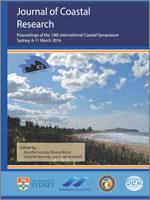Burvingt, O.J.P.; Masselink, G., Russell, P., and Scott, T. 2016. Beach response to consecutive extreme storms using LiDAR along the SW coast of England. In: Vila-Concejo, A.; Bruce, E.; Kennedy, D.M., and McCarroll, R.J. (eds.), Proceedings of the 14th International Coastal Symposium (Sydney, Australia). Journal of Coastal Research, Special Issue, No. 75, pp. 1052 - 1056. Coconut Creek (Florida), ISSN 0749-0208.
On the south west coast of England, the 2013/14 winter has been the most energetic period over the past 60 years, counting over 22 storms with recorded wave heights exceeding 10 meters. Pre- and post-storm aerial LiDAR surveys have been carried out by the Environmental Agency along the entire SW coastline. A total of 157 beaches have been selected from this dataset and morphological changes over the stormy period have been calculated and studied by processing the LiDAR data. This analysis shows the varying response of the beaches to the extreme storms and highlights two mechanisms involved in sediment transport. The results show that North coast beaches exposed to the main storm waves eroded, losing sediment offshore by cross-shore transport processes. Conversely, on the South coast beaches, where wave approach was more oblique, sediment was mainly transported along-shore resulting in beach rotation.





